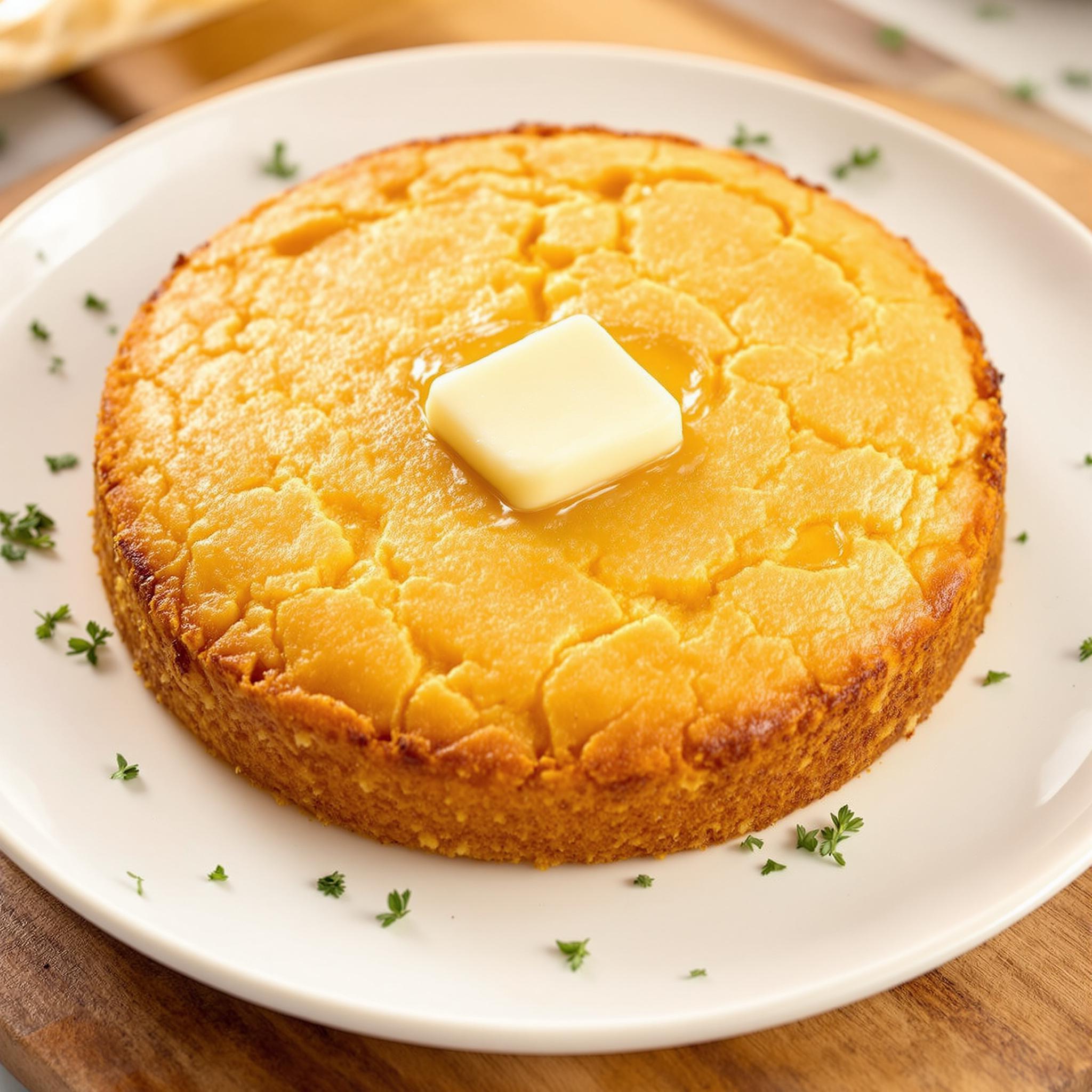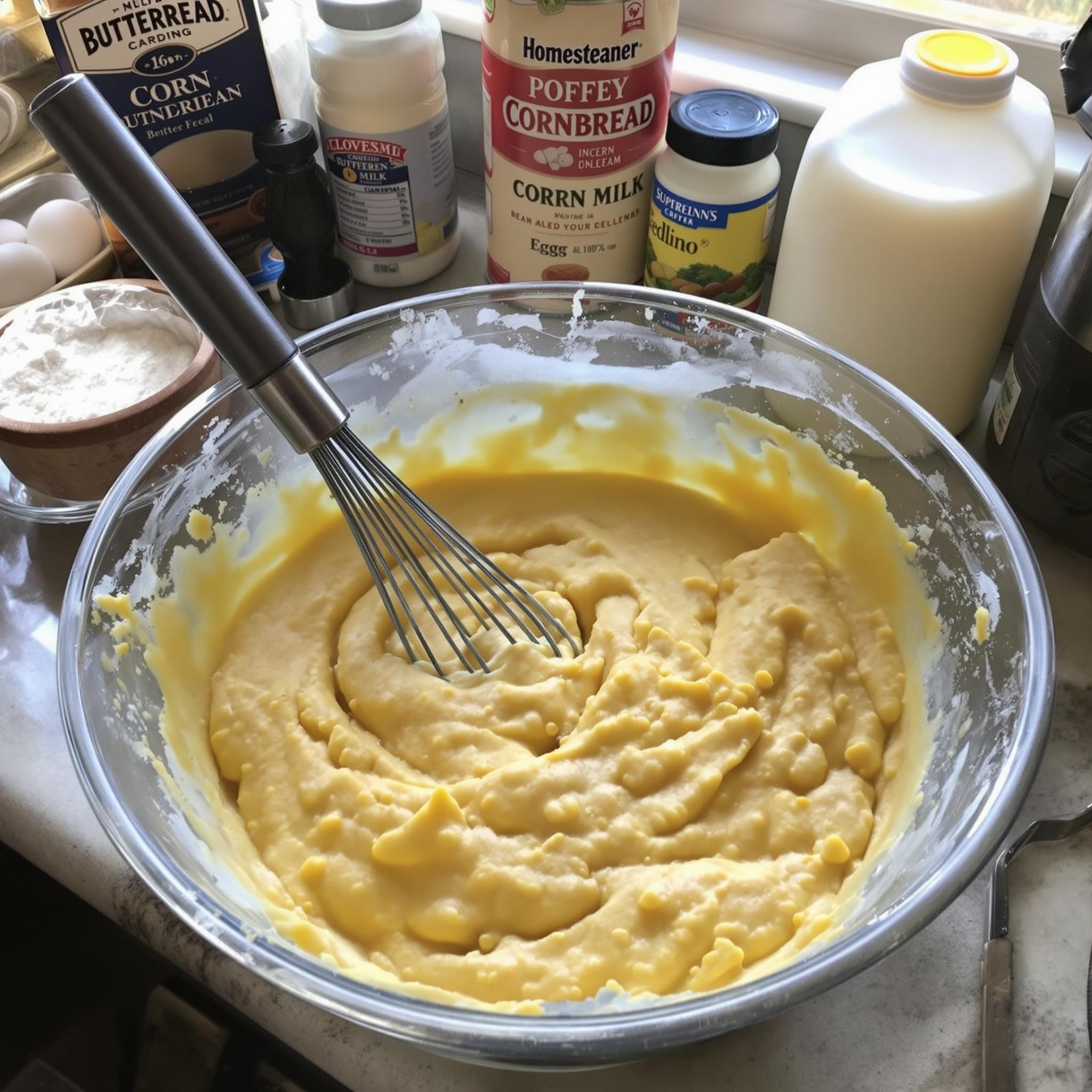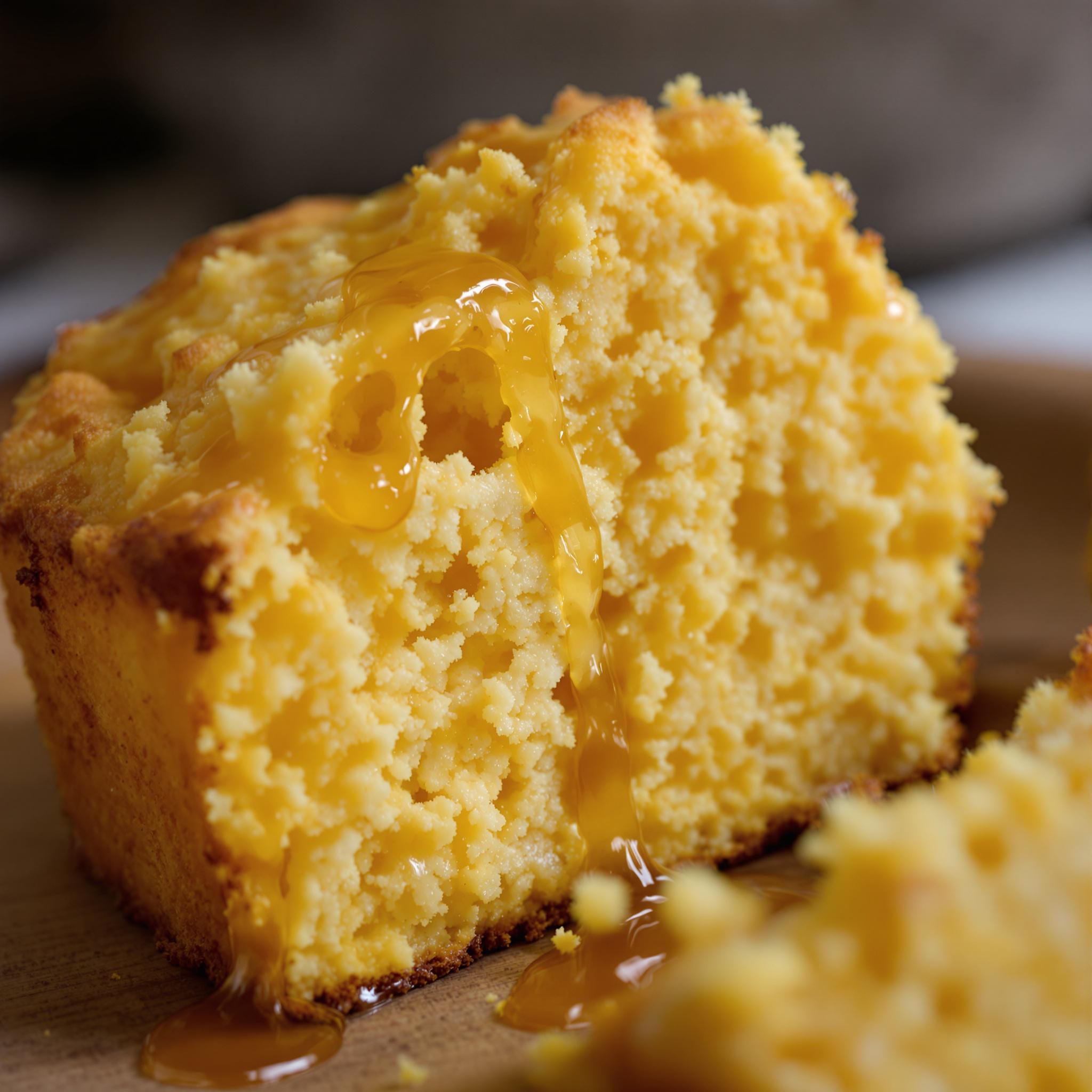
Introduction to Homesteader Cornbread
There’s something magical about the smell of freshly baked cornbread wafting through the kitchen. Homesteader Cornbread, with its golden crust and tender crumb, is a timeless classic that brings comfort to any table. I first made this recipe on a chilly Sunday afternoon when my family was craving something hearty yet simple. It turned out so well that it became a staple in our household. Whether you’re new to baking or a seasoned pro, this recipe is foolproof and utterly delicious.
The Story Behind Homesteader Cornbread
Cornbread has deep roots in American culinary history, particularly in Southern cuisine. Traditionally, it was a humble dish made by homesteaders who relied on cornmeal as a pantry staple. Over time, variations emerged—some sweeter, others savory—but the essence remained the same: a wholesome bread that pairs beautifully with soups, stews, or even as a standalone treat. My version blends the simplicity of traditional recipes with a modern twist, ensuring it’s moist, flavorful, and perfect for today’s busy lifestyles.
Why You’ll Love This Cornbread Recipe
This Homesteader Cornbread stands out because it strikes the perfect balance between sweet and savory. The texture is light yet satisfyingly dense, thanks to the combination of cornmeal and flour. Plus, it’s incredibly versatile—you can enjoy it plain, slathered with butter, or topped with honey for an extra touch of indulgence. Best of all, it’s quick to whip up, making it ideal for weeknight dinners or last-minute gatherings.
Perfect Occasions to Prepare Homesteader Cornbread
Whether you’re hosting a cozy family dinner, serving it alongside chili at a game-day party, or bringing it to a potluck, this cornbread fits every occasion. It’s also a wonderful addition to holiday meals like Thanksgiving or Christmas, where its warm, comforting flavors complement roasted meats and seasonal sides. Trust me; your guests will rave about it!
Ingredients for Classic Homesteader Cornbread
- 1 cup fine cornmeal
- 1 cup all-purpose flour
- 1/4 cup granulated sugar
- 1 tablespoon baking powder
- 1/2 teaspoon salt
- 1 cup milk (whole or buttermilk works best)
- 1 large egg
- 1/4 cup melted butter, plus more for greasing
Substitution Options for Flexibility
- Use almond milk or oat milk instead of regular milk for a dairy-free option.
- Swap honey or maple syrup for sugar if you prefer natural sweeteners.
- Replace butter with coconut oil for a vegan-friendly alternative.
- Add shredded cheese or jalapeños for a savory twist.
Preparation Steps for Perfect Cornbread
Step 1: Preheat and Prepare
Start by preheating your oven to 400°F (200°C). Grease an 8×8-inch baking pan with a little butter or line it with parchment paper for easy removal later. In a large mixing bowl, whisk together the dry ingredients: cornmeal, flour, sugar, baking powder, and salt. This step ensures even distribution of flavors, giving your cornbread a consistent taste in every bite. Pro tip: Sift the dry ingredients to avoid lumps and achieve a smoother batter.
Step 2: Mix the Wet Ingredients
In another bowl, beat the egg lightly before adding the milk and melted butter. Stir until everything is well combined. The mixture should have a creamy, golden hue, thanks to the richness of the butter. Take a moment to inhale the aroma—it’s already starting to feel cozy! Slowly pour the wet ingredients into the bowl with the dry ingredients, stirring gently just until the batter comes together. Be careful not to overmix, as this can make the cornbread tough instead of tender.
Step 3: Bake to Golden Perfection
Pour the batter into the prepared pan, spreading it evenly with a spatula. Pop it into the oven and bake for 20-25 minutes, or until the top turns a beautiful golden brown and a toothpick inserted in the center comes out clean. As it bakes, your kitchen will fill with the irresistible scent of warm cornmeal and butter—a true sign that something amazing is happening in the oven.

Chef’s Tip for Extra Flavor
To elevate your Homesteader Cornbread, sprinkle coarse sugar or a dusting of paprika on top before baking. This creates a delightful crunch and adds visual appeal. Another trick? Let the batter rest for 10 minutes after mixing—it allows the cornmeal to hydrate fully, resulting in a moister texture.
Time Breakdown for Effortless Baking
- Prep Time: 10 minutes
- Cooking Time: 25 minutes
- Total Time: 35 minutes
Nutritional Information
Each serving of Homesteader Cornbread contains approximately 150 calories, with 5g of fat, 3g of protein, and 22g of carbohydrates. It’s a satisfying treat that won’t weigh you down.
An Interesting Curiosity About Cornbread
Did you know that Native Americans were the first to cultivate corn and create early versions of cornbread? They used ground maize mixed with water to form simple flatbreads, which European settlers later adapted into what we now know as cornbread.
Necessary Tools for Success
- Mixing bowls
- Whisk
- Baking pan (8×8 inches)
- Spatula
- Toothpick or cake tester
Storage Instructions for Freshness
Once cooled, store your Homesteader Cornbread in an airtight container at room temperature for up to two days. For longer storage, wrap individual slices in plastic wrap and freeze them for up to three months. To reheat, simply microwave for 20-30 seconds or pop it in the oven for a few minutes to restore its crisp edges.
If you live in a humid climate, refrigerating the cornbread can help maintain its freshness. Just be sure to bring it back to room temperature before serving for optimal flavor and texture.
Avoid stacking multiple layers of cornbread without parchment paper in between, as this can cause them to stick together and lose their structure.
Tips and Tricks for Mastering Cornbread
- Always use fresh baking powder for maximum rise.
- Don’t skip greasing the pan—it makes cleanup a breeze and prevents sticking.
- For a richer flavor, let the batter sit for a few minutes before baking.

Serving Suggestions for Every Palate
- Serve warm with a pat of butter melting into each slice.
- Pair with spicy chili or creamy soup for a hearty meal.
Healthier Alternatives for Your Cornbread
Looking to make your Homesteader Cornbread healthier? Try these six variations:
- Whole Grain Goodness: Substitute half the all-purpose flour with whole wheat flour for added fiber.
- Low-Sugar Option: Reduce the sugar to 2 tablespoons or replace it with a sugar substitute.
- Vegan Delight: Use plant-based milk and coconut oil instead of dairy products.
- Gluten-Free Twist: Swap the all-purpose flour with a gluten-free blend.
- Herb-Infused: Add chopped rosemary or thyme for a savory kick.
- Fruit-Filled: Fold in blueberries or diced apples for a fruity surprise.
Common Mistakes to Avoid When Making Cornbread
Mistake 1: Overmixing the Batter
Overmixing leads to dense, tough cornbread. Mix just until the ingredients are combined, and don’t worry if there are a few lumps—they’ll disappear during baking. Pro tip: Use a light hand when folding the wet and dry ingredients together.
Mistake 2: Skipping the Rest Time
Letting the batter rest allows the cornmeal to absorb moisture, resulting in a softer texture. Skipping this step might leave you with drier cornbread. Set a timer for 10 minutes while you tidy up—it’s worth the wait!
Mistake 3: Underbaking
Underbaked cornbread can be soggy in the middle. Always test with a toothpick to ensure it comes out clean. If unsure, give it an extra 2-3 minutes in the oven.
Frequently Asked Questions About Homesteader Cornbread
Can I make this recipe gluten-free?
Absolutely! Simply replace the all-purpose flour with a gluten-free flour blend. Many readers have tried this modification successfully, and the results are still deliciously fluffy.
How do I prevent my cornbread from being too dry?
Dry cornbread often happens due to overbaking or insufficient liquid. Make sure to measure your ingredients accurately and check for doneness a minute or two before the suggested baking time ends.
What’s the best way to serve leftover cornbread?
Leftover cornbread is fantastic toasted and topped with jam or honey. You can also crumble it into salads or soups for added texture.
Can I add fruits or nuts to the batter?
Yes! Blueberries, raspberries, or chopped pecans pair wonderfully with cornbread. Just fold them in gently before pouring the batter into the pan.
Is it possible to make mini cornbread muffins?
Definitely! Divide the batter among greased muffin cups and reduce the baking time to 15-18 minutes. They’re perfect for portion control or kids’ snacks.
Why does my cornbread taste bland?
If your cornbread lacks flavor, consider adjusting the seasoning. A pinch of smoked paprika or a dash of vanilla extract can enhance the overall taste profile.
Can I use coarse cornmeal instead of fine?
While fine cornmeal yields a smoother texture, coarse cornmeal provides a rustic, chewy bite. Either works, depending on your preference.
Should I use buttermilk or regular milk?
Buttermilk adds tanginess and tenderness, but regular milk works fine too. If you want the benefits of buttermilk without buying it, mix 1 tablespoon of lemon juice or vinegar with 1 cup of milk and let it sit for 5 minutes.
How long can I store cornbread?
At room temperature, cornbread stays fresh for 2 days. Refrigerated, it lasts up to a week. For extended storage, freeze wrapped slices for up to 3 months.
What tools do I need to make cornbread?
You’ll need basic kitchen tools like mixing bowls, a whisk, a spatula, and an 8×8-inch baking pan. Nothing fancy required!
Conclusion
Homesteader Cornbread is more than just a recipe—it’s a celebration of simplicity, tradition, and warmth. Whether you’re baking it for a special occasion or a casual weeknight meal, this cornbread promises to delight everyone who tries it. So grab your apron, gather your ingredients, and let’s create something truly unforgettable together!
